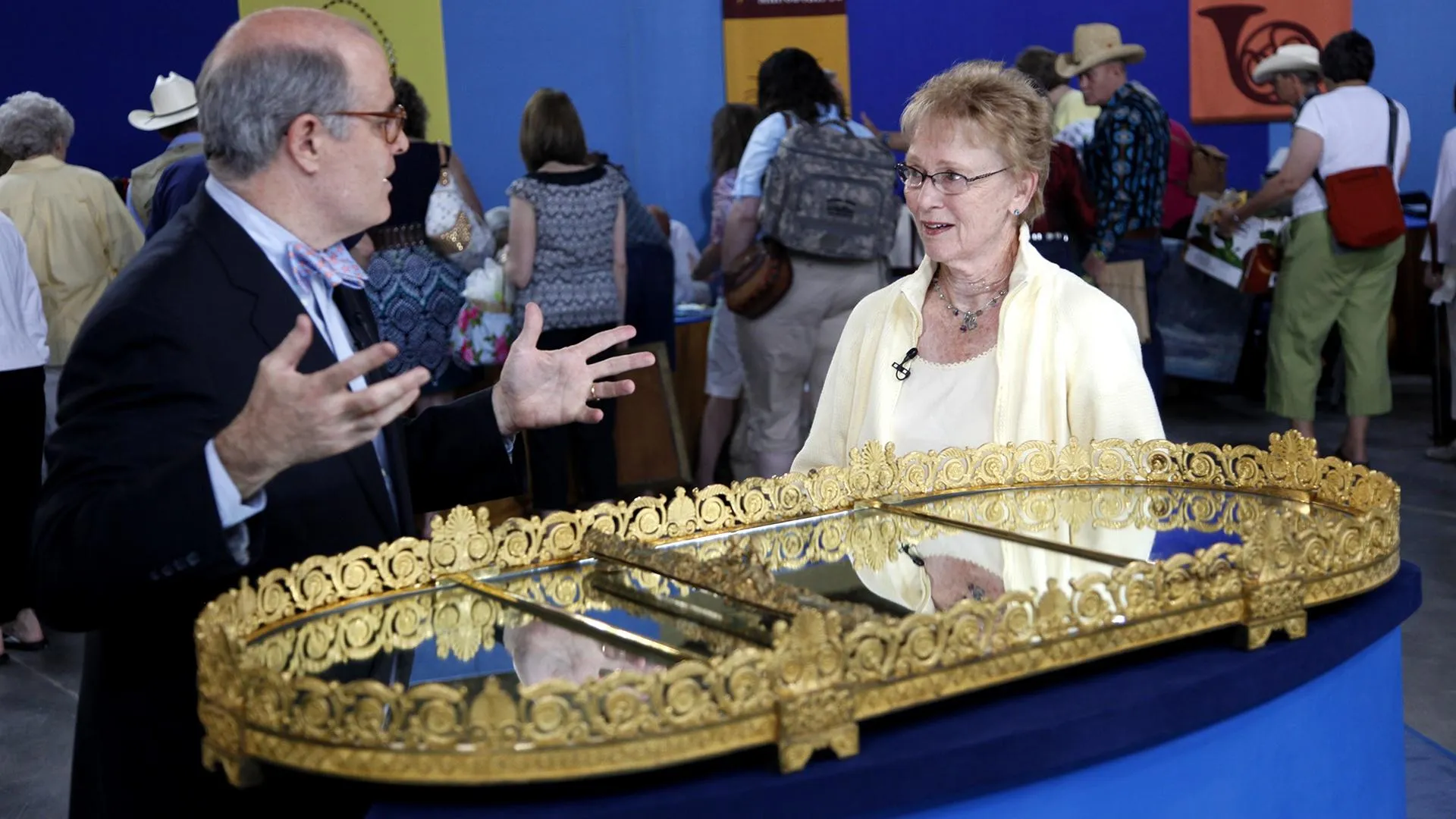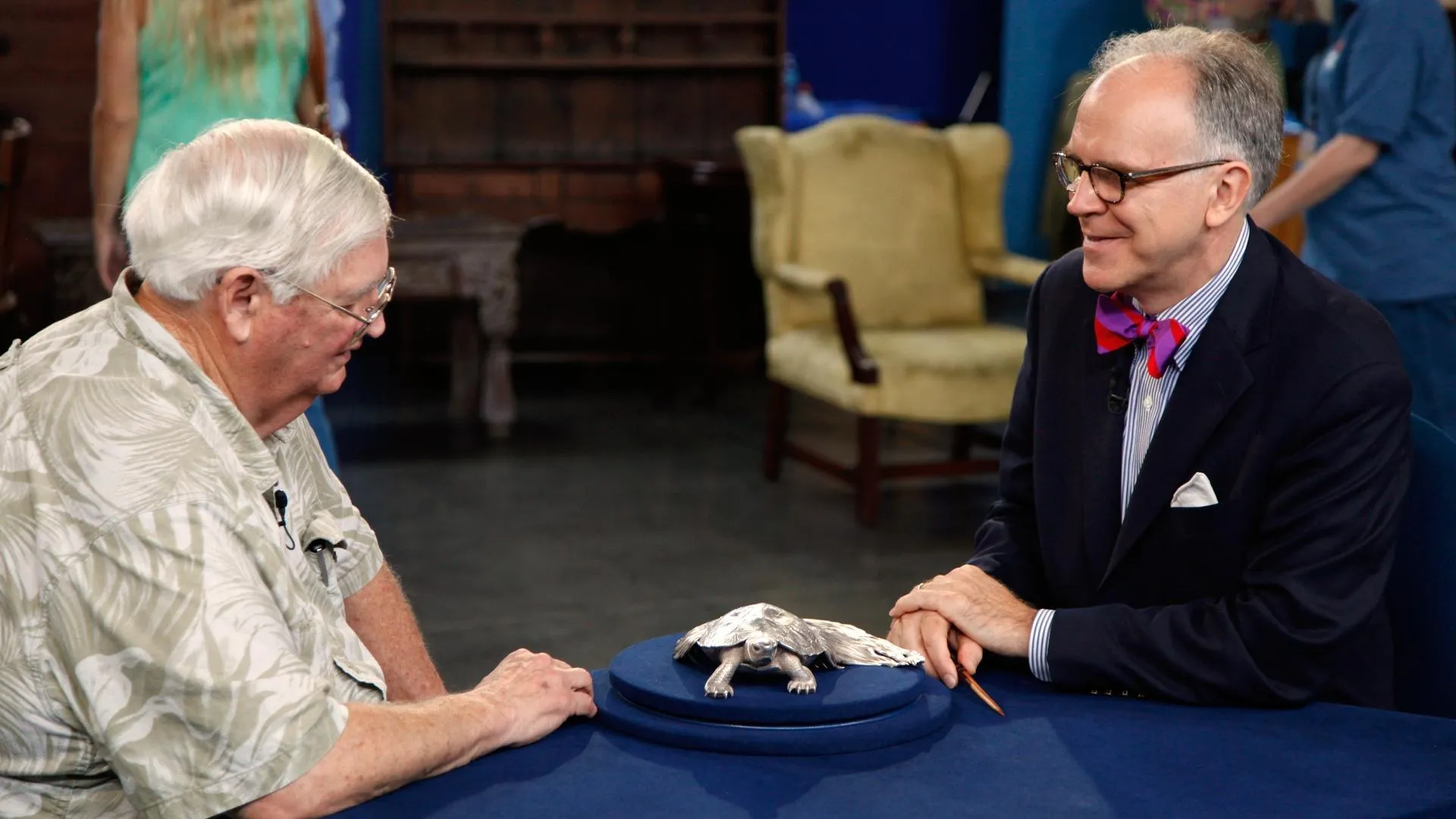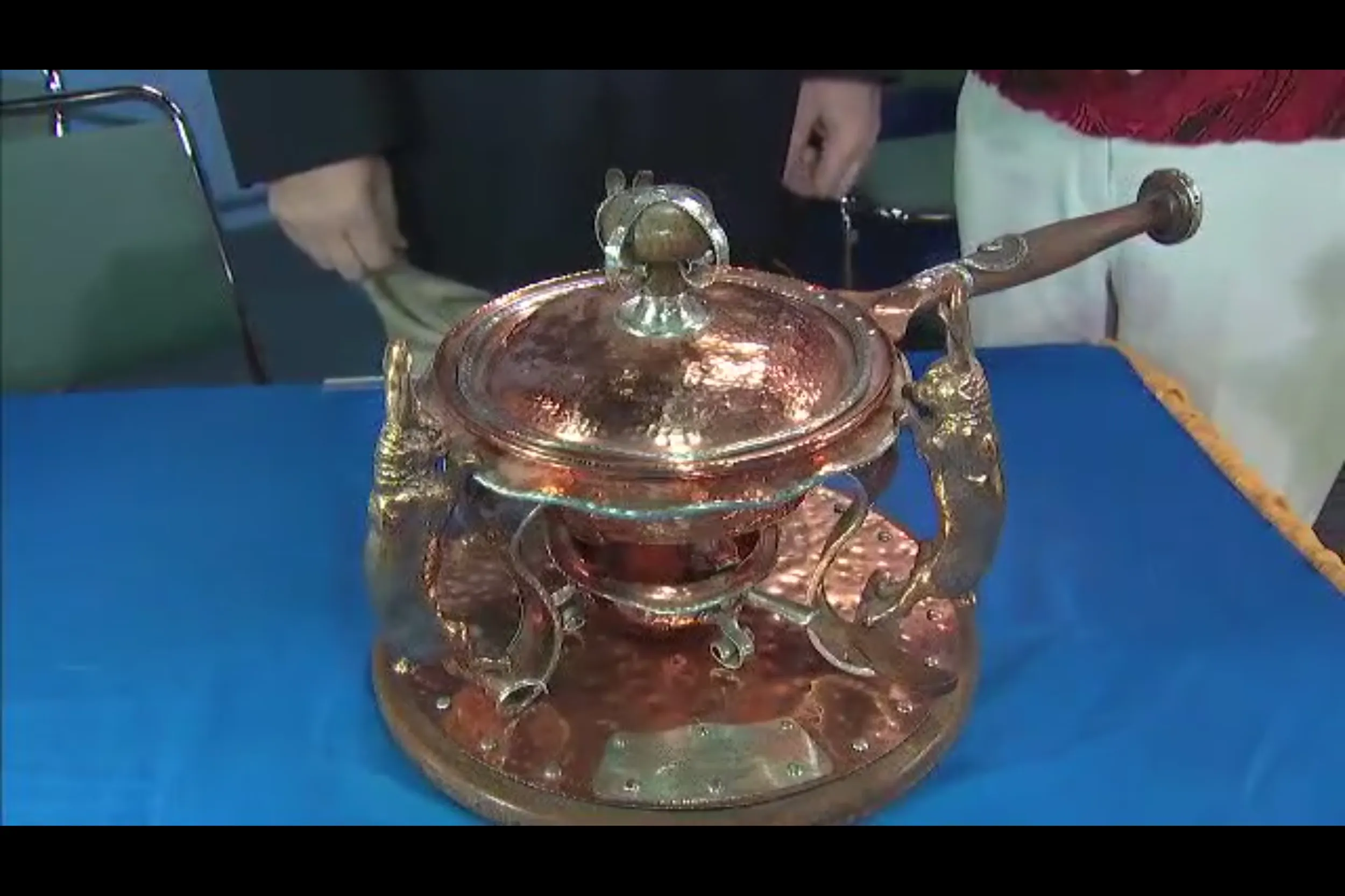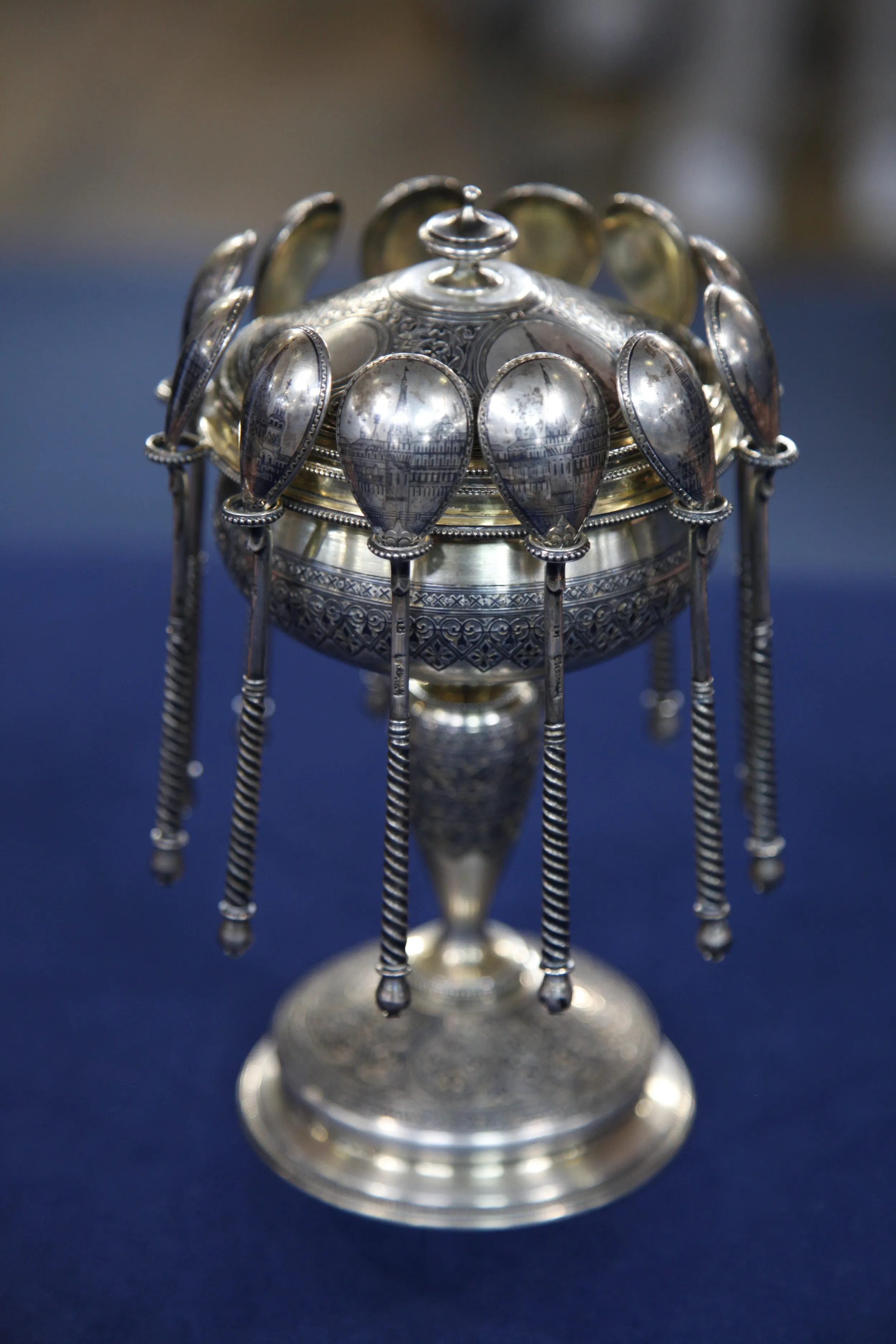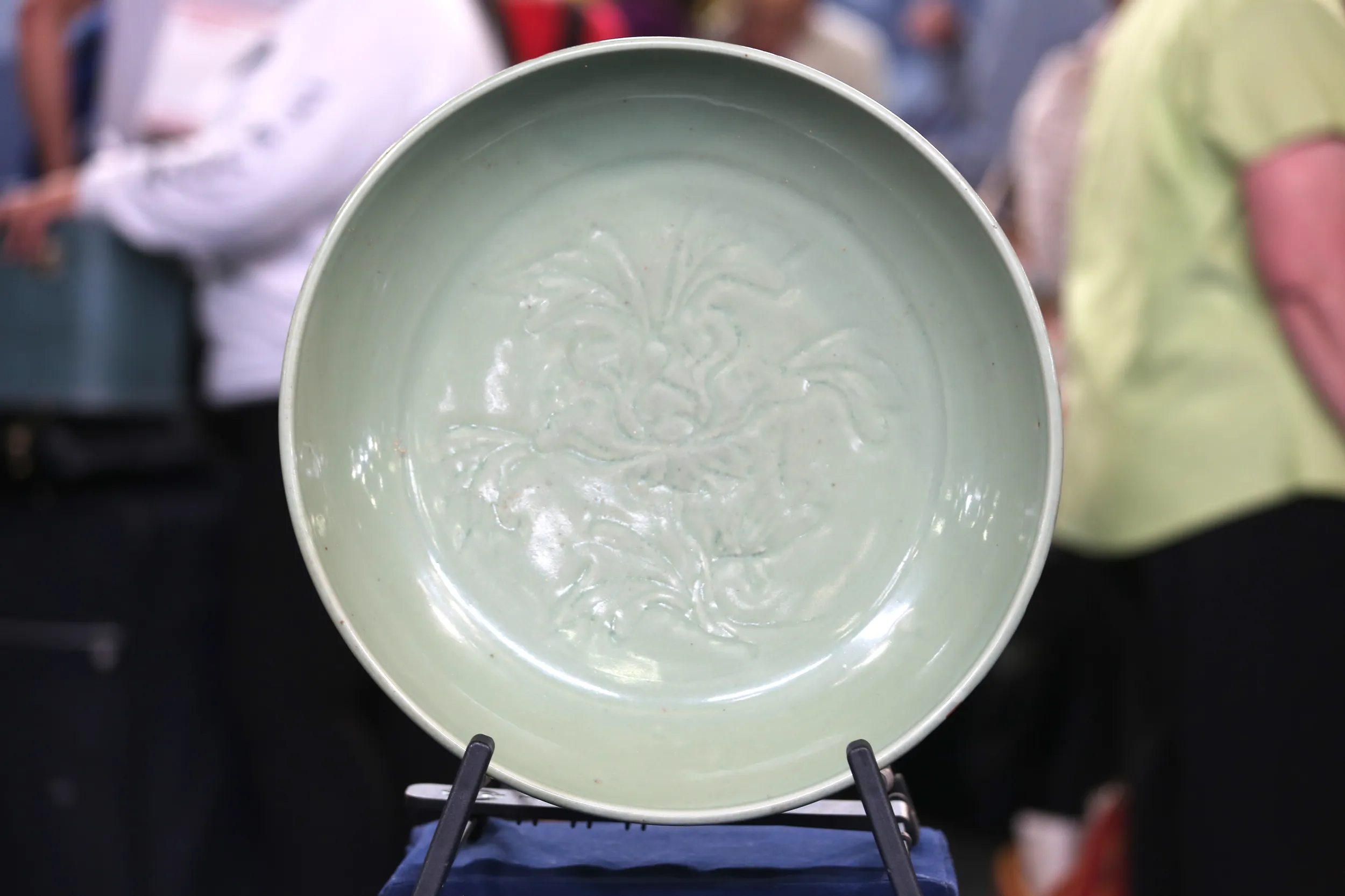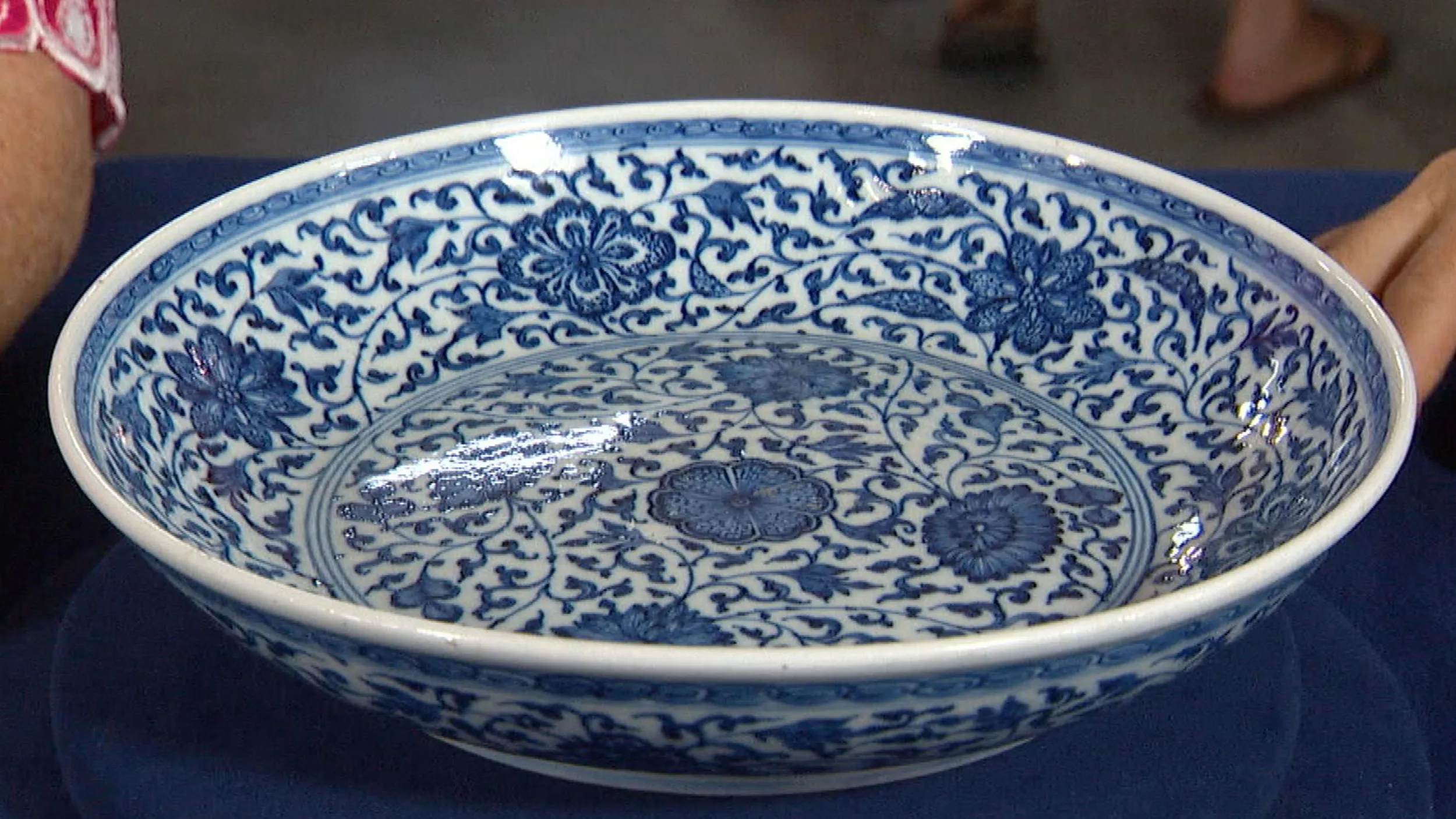GUEST: My mom, during World War II, worked with the Red Cross over in England. A few weeks before she came home, she bought this dish, and then shipped it back to the United States. She's had it since 1946.
APPRAISER: Let's start by looking at the bill of sale.
GUEST: Okay.
APPRAISER: You can see it was sold from an antiques dealer in Winchester in the southwest of England on March 26, 1946. And the dealer calls it a Minton covered casserole and then goes on to say copper luster jug, which I don't know if you still have the jug.
GUEST: I think one of my sisters got those, yes.
APPRAISER: Really? Well, it wasn't cheap. The Minton casserole was £12 and 10 shillings.
GUEST: Yes.
APPRAISER: And that was, as they say, a tidy sum in 1946. Your mother must have saved up her money, because I don't think the Red Cross was paying her a lot.
GUEST: No.
APPRAISER: But it's an impressive object. It's actually not Minton. And it's not, strictly speaking, a casserole either.
GUEST: Okay.
APPRAISER: It was made by another company called George Jones & Company.
GUEST: Okay.
APPRAISER: And we know that, first of all, because it's a very well known model by George Jones. And secondly, it's marked. If we turn it over, it has three marks on it. In the center, we can see a little painted mark where there's been an unglazed section left. And that's the way Jones put his design number on pieces. There's also a very discreet mark here. There's a little impressed mark, which is barely visible. But that's actually the company mark of George Jones & Son. The third mark is that diamond mark, and that is what we call an English Registry mark. And that dates it very precisely to 1873.
GUEST: Okay.
APPRAISER: The cover has this spectacular quail, mother quail with her chicks around. And it's a game pie dish. And game pie-- quail being a game bird-- was a popular dish for large Victorian families in the 1870s. Minton made them, but George Jones arguably made better ones. It's made in what we call majolica glazed ware, which is a ware that Minton invented about 1850, but Jones specialized in. And collectors today prefer the work of Jones arguably above most others. These were designed, of course, to sit on the big Victorian table, and so they're decorated all the way around. Little chicks all the way around, and around the sides, these rabbits, and oak leaves, an acorn... There is one missing head on one of the chicks, and another one has had the head knocked off and put back on-- the one you would expect, on the top of the quail. But this is not bad. It's not uncommon to find these in heavily damaged or heavily restored condition. A professional can restore these pieces, and it's not affecting the value dramatically. If this came at auction today, you'd be estimating it for at least $8,000.
GUEST: Wow.
APPRAISER: And possibly up to $12,000.
GUEST: She would be really happy.
APPRAISER: I think she would, too.
GUEST: She'd be really happy with that.

